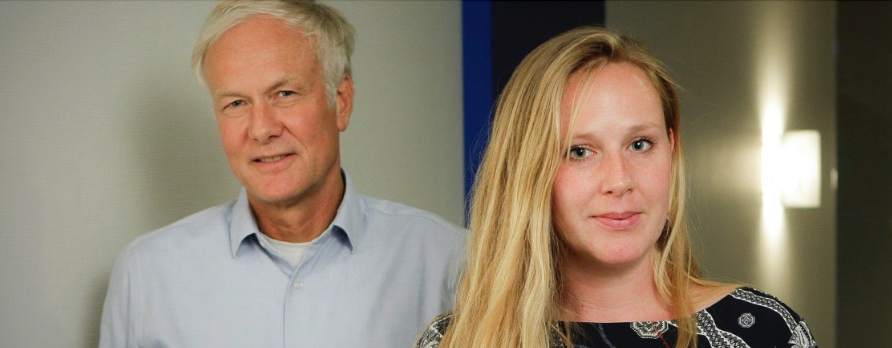After a long and extensive study, a draft scheme is now ready for active termination of life between the ages of 1 and 12.
Sometimes children experience hopeless and unbearable suffering. Parents and physicians have expressed a need for active termination of life when such suffering occurs. After a long and extensive study, a draft scheme is now ready for active termination of life in the age group of 1 to 12.* Marije Brouwer, researcher at UMC Groningen, and Eduard Verhagen, pediatrician at UMC Groningen, provide an explanation.
After Belgium allowed active termination of life in mentally competent children in 2014, a discussion arose in the Netherlands about active termination of life in children under the age of 12. For children younger than 1 year (the LZA-LP regulation) and for children older than 12 years, a regulation is already in force. But not for children who fall in between.
Developments in palliative care have ensured that symptom control in the palliative phase has improved enormously. But even with good palliative care, there are still a few cases where symptom control seems to fall short of taking away suffering in a dignified manner. Fortunately, these are exceptions, but they do exist. “It is too easy to say that good palliative care will get you there completely. Based on the many interviews we have done, we conclude that there remains a group that suffers unbearably and inhumanely. The draft scheme is intended for that group,” says Marije.
Eduard adds: “Strictly speaking, the possibility already exists. But it is not used in practice, because there is insufficient legal certainty for doctors to rely on a non-prosecution policy. In our research, we show that active termination of life does not currently occur in that age group. And the mentioned route forms a barrier for the doctors. At the same time, we have seen that the alternatives are not available and that people sometimes still die from them (with many serious symptoms during death).”

Eduard Verhagen and Marije Brouwer
There was no humane solution to take away this suffering
The provision of a scheme for active termination of life for children aged 1 to 12 has now been realized in the form of a draft scheme. This has been drawn up entirely on the basis of practical experience and needs. Marije explains: “Our research shows that there is indeed a group of parents who see their child as suffering unbearably, for which in some cases there is no other dignified solution to take away this suffering. Especially in children with epilepsy syndromes that are very difficult to treat and in children in the dying phase, suffering sometimes arises that is very difficult to relieve and that is seen as unbearable and inhumane.
For example, there was a child who had to be tied up because she caused a lot of damage to herself due to the epilepsy and neurological restlessness (poking out her eyes, making herself vomit). There was also a child who screamed for hours every day, hardly slept and only seemed to be somewhat comfortable when rocked on the parents' lap. That is unsustainable. I think you have to speak of unbearable suffering,” says Marije. “These cases are often invisible to care providers in the 2nd and 3rd line, because this care usually takes place at home.”
What is striking in the conversations with parents is the process that parents go through before they get to the point where they say: my child is suffering so unbearably, death is the only way out. Marije: “It is a gigantic step for parents to realize that their child - whom they have welcomed with love, whom they love and who try to give them the best care - is still suffering unbearably. Despite all their effort. Parents themselves almost go under in their attempts to offer their child comfort and a dignified existence. And yet I have not come across a single case where I thought: you are asking this because you do not want this for yourself.”
Talk about it
The suffering of this group of children can be extremely harrowing. “That does not mean that things always go wrong or that children with certain disorders suffer by definition. There are many families where there is still a good quality of life, even with very serious disorders. But the harrowing cases are also there. Children who have hundreds of epileptic seizures a day, who are constantly uncomfortable. There are children in the dying phase, which lasts days to weeks, without the child being able to be given sufficient comfort,” says Marije.
That is also a reason for Marije to say: the moment parents submit such a request to you as a doctor, you have to take it very seriously. “Have a conversation about that. See where their question comes from and see what is possible. Because for parents, asking for the death of their child is the very last emergency step. Regardless of what the outcome of those conversations will be, you have to do something with it. In our research, we see that requests are often ignored on the basis that it is not allowed.”
The scheme as it is now drawn up is not just an age extension of the current scheme for newborns. The group of children between 1 and 12 years seems to be a significantly different group of children when you look at the conditions from which they die. Also when you look at the suffering that is seen in them and the way in which parents are involved in the care of their child. This requires due care requirements that are appropriate for this group. Marije: “I therefore think it is great that the draft scheme is based on the existing requests as we found them in our interviews. That is what you want: that practice and regulations are in line with each other.”
Legal certainty for doctors is important
Physicians, in turn, are often searching for ways to help these families. They are happy to help, but there is often still a lack of clarity about how the existing regulations should be interpreted. Doctors also want to know where the boundaries lie between symptom control and active termination of life and what the options are. Marije: “That is also an important insight; you are not there with a regulation alone. As a number of doctors have pointed out: you cannot make an arrangement and then expect a doctor to put his head on the chopping block, as it were, in anticipation of whether or not there will be a prosecution. You also need insights into how regulations can be interpreted in practice. And there must be a certain attitude, so that doctors are not alone in how regulations can be interpreted in practice.
 Eduard adds: “It is important to us that a procedure is established in which it becomes clear how the Public Prosecution Service will act if a life has been terminated. I think that everything should be done to maximize legal certainty for doctors. Because that's where the biggest pain is for doctors right now. Both the discussion and the practice surrounding 'termination of life carried out in accordance with the rules and due care requirements' can only take place optimally if there is confidence in the non-follow-up policy.”
Eduard adds: “It is important to us that a procedure is established in which it becomes clear how the Public Prosecution Service will act if a life has been terminated. I think that everything should be done to maximize legal certainty for doctors. Because that's where the biggest pain is for doctors right now. Both the discussion and the practice surrounding 'termination of life carried out in accordance with the rules and due care requirements' can only take place optimally if there is confidence in the non-follow-up policy.”
Change in the conversations between doctor and parent
Eduard indicates that we do not know exactly how many children are involved each year. He emphasizes that these are exceptional cases, but it is precisely those exceptional cases that are important. Because the conversation about end-of-life care is sometimes largely determined by what we agree with each other regarding those exceptional cases. “My own estimate is that it could be fewer than five children per year. The numbers may not even be the most important thing. The strength of the draft regulation is, among other things, that it allows the conversation between doctors and parents, and sometimes perhaps also the child, to proceed in a different way. What are the options, what are the choices, what can we count on when all resources are really exhausted? The prospect of the possibility that hopeless and unbearable suffering need not be accepted often gives parents so much courage that the conversations about pediatric palliative care can also get more substance.”
Also invest in training
The scheme ultimately stands or falls with proper embedding, information and implementation. Marije recommends investing in training so that doctors know what is possible. That they know how to respond to requests and know what regulations mean. At present, suffering is often thought of as primarily physical suffering, while in practice it is usually a combination of different forms of suffering. “In addition, invest in a support system, so that caregivers and parents feel supported from the moment a request is made. And thus the decision-making process becomes a supported decision. The most important thing is that it does not become a doctor's decision that the parents only agree to, but a decision that is made jointly. If you don't do that, you don't do justice to the position that parents have and the knowledge they have about their child's suffering.”
The regulation provides direction
This draft regulation is a very important step in providing clarity to parents and doctors about the options. When a child suffers unbearably and there are no other options to alleviate that suffering, it provides tools to find a way to end that suffering in a dignified way.
Finally, Eduard would like to emphasize that the availability of the highest possible quality of pediatric palliative care has been taken up exceptionally quickly and energetically in our country. “For me, this is an extremely important condition for active termination of life to take place. These are situations where (child) palliative care falls short. That (paediatric) palliative care must be readily available and fortunately we have all done an incredible amount for that”, Eduard pleads.
*The draft regulation is now with the House. Minister Kuipers is expected to respond in October 2022.
Read the full research report below by Marije Brouwer, Eduard Verhagen and Els Maeckelberghe (Assistant Professor of Medical Ethics and Research Ethics / Confidential Advisor Scientific Integrity at the University of Groningen)